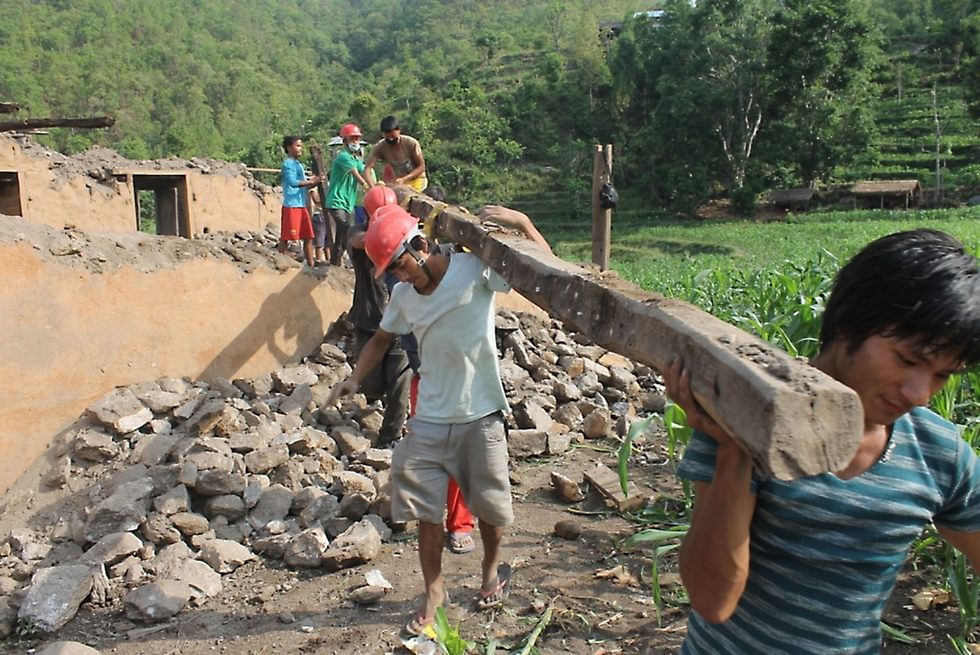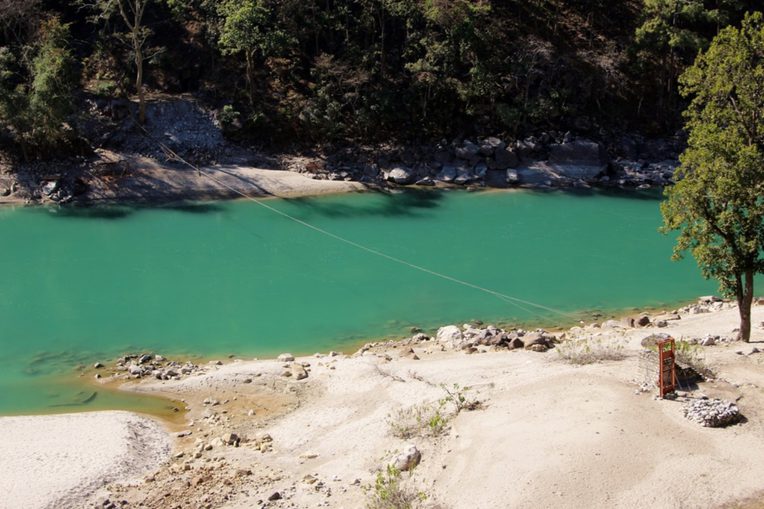The Damage Done and the Dams to Come
From the Series: Aftershocked: Reflections on the 2015 Earthquakes in Nepal
From the Series: Aftershocked: Reflections on the 2015 Earthquakes in Nepal

In April 2015, Nepal was in the early stages of ambitious plans to develop its significant hydropower potential when the earthquakes inflicted substantial damage on the country’s existing hydropower infrastructure. Many power plants went temporarily offline, and major repairs will be necessary in the coming months. Overall, the hydropower industry sustained estimated losses of $180 million: facilities representing one-seventh of the country’s installed generation capacity were severely damaged; hundreds of miles of distribution lines will need to be reconstructed; and 600,000 households lost access to electricity. Projects currently under construction will be significantly delayed, as access roads remain blocked and the risk of landslides remains heightened during monsoons. As a result, the government of Nepal has retracted its recent commitment to end scheduled brownouts—up to fourteen hours daily—by 2018. In the short term, at least, progress toward turning Nepal into a “hydropower nation” has been stalled. But what about the medium- and long-term prognosis?
Since 2008, our research in Nepal has focused on evolving patterns of hydropower development. Well before the earthquake of April 25, hydropower professionals were reluctant to discuss links between seismic risk and hydropower production. Four developers went so far as to say that the economic need for development in Nepal outweighed the risk of earthquakes. According to these respondents, earthquakes were simply a fact of life and should not interrupt or delay the development of dams. Another engineer told us: “This is a silly question. All the components will be defined on the basis of earthquake risks.” Here, seismic activity was presented as a calculable risk that could be managed through technological intervention. On one hand, this denial or omission of earthquake potential seemed to point out the ineluctable challenges that Nepal faces in attempting to integrate its economy into global markets, and on the other, it indexed the desire of the private sector to reap profits from hydropower in spite of obvious geophysical risks. Water activists have been pointing to this omission for years, especially in light of predictions that “the next big one” was already decades late. With less than 800 megawatts of electricity currently available, discussions of hydropower development in Nepal are very much about forecasting and extrapolating differently imagined futures based on competing claims to information. Whose future vision will prevail?

The earthquake would seem to lend credence to those who advocated for a slower, more deliberative expansion of hydropower that prioritizes multipurpose projects over export-oriented projects built solely for electricity production and run-of-the-river projects over large storage/reservoir projects. It would also seem to suggest that developers ought to be required to consider the seismic and geomorphological risks inherent to certain projects. However, free-market advocates for expedited development with an eye for export and trade argue that revenue for Nepal’s recovery is needed now. In Nepal, large projects take the form of public-private partnership agreements, where state and private entities enter into a agreement to share risks—a structure that relies on cheap financing from state-subsidized banks, which are now in decline in the global North following the financial crisis. How will new assessments of seismic risk shift these agreements? Central to these debates and their outcomes is the way that seismicity, realized or unrealized, shapes perceptions of financial risk.
At the same time, our own observations from the Rasuwa and Dolakha districts also indicate that the hydropower sector played an important role in disaster response, especially in rural areas where local government was lacking. After the earthquake, thousands of people found temporary shelter in hydropower project facilities. The hydropower sector distributed food and tarpaulins to dislocated communities, and used machinery to clear obstructed roads. More recently, hydropower companies have made commitments to rebuild homes, schools, medical posts, and other community buildings as part of their corporate social responsibility (CSR) programs. These actions indicate that the hydropower sector could play a more integrated role in disaster management and planning.
So how will the hydropower sector account for earthquakes? Where will policymakers and the media stand on this issue? One indication is a recent New York Times op-ed, coauthored by leading Nepali politician Gagan Thapa, that argues for more attention to the seismic and ecological vulnerabilities of hydropower project sites and for an expanded focus on solar power, rather than a single-minded hydropower approach. This call for reevaluation indicates that the discourses on disaster preparedness, energy security, and hydropower development are evolving in Kathmandu as we speak. At one recent event, several hydropower actors expressed changing views on comprehensive risk assessment and project planning, stating that “we can no longer be complacent” and that “this is the time to rethink.” How, then, will the rethinking of risk proceed?
Future research on hydropower production in Nepal will have to map a new landscape: whole regions have been devastated and recent developments in the political arena lead us to assume that the earthquakes will have institutional ramifications. How, researchers need to ask, will the earthquakes affect the relationship between “project-affected people” and the landscapes of hydropower? How will concerns over heightened risk affect their expectations and worries about planned hydropower plants? How will post-earthquake patterns of resettlement and national planning open or foreclose new opportunities for hydropower development? And finally, considering similar patterns of seismicity all over the Himalayas, in what ways might these recalculations and reorientations in Nepal shape the future of the broader Himalayan hydropower frontier?